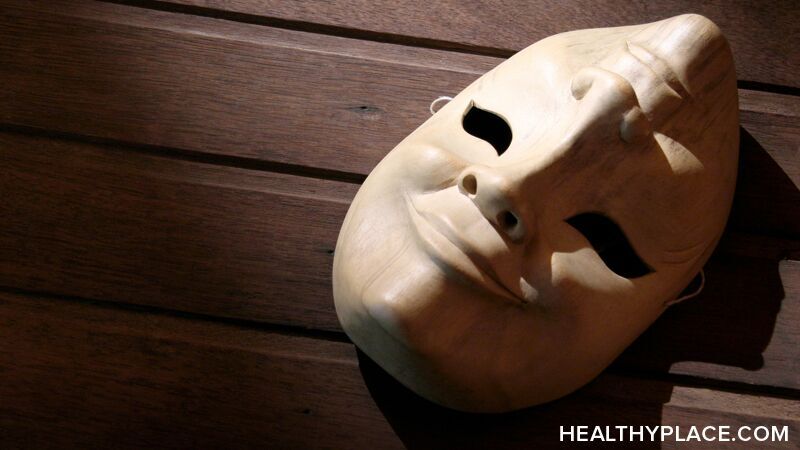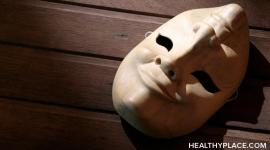What Is Bipolar Disorder? Definition, Symptoms and Treatment

Bipolar disorder is a serious mental illness that is hard to accurately describe in a sentence or two. That is because it is a nuanced illness with so many people experiencing it in so many ways. That said, the overarching principles of bipolar disorder is that it is a chronic, lifelong mental illness that remains a challenging struggle for those who have it.
Bipolar disorder is also sometimes called manic depressive illness.
Bipolar Disorder Definition
Of course, like all illnesses, bipolar disorder has a medical definition. In this case, the definition for bipolar disorder comes from a book called the Diagnostic and Statistical Manual of Mental Disorders, Fifth Edition (DSM-5). The DSM-5 is the most up-to-date version of that reference, which defines all mental illnesses. (We’ll be talking more about bipolar disorder and the DSM-5 in just a bit.)
Bipolar Disorder Definition – Moods
Bipolar disorder is characterized by periods of highly elevated or irritated mood and energy, known as manic or hypomanic moods depending on their severity. These alternate with periods of very deep, profound, low mood and energy, known as depressed moods. Symptoms of depression can cooccur alongside the symptoms of mania or hypomania and these are known as mixed moods. It is also possible to have periods of time where few, if any, symptoms are present and these are known as euthymic moods.
A mood that meets the following criteria is known as an “episode.”
Bipolar Disorder Criteria
Of course, just experiencing one instance of depression doesn’t qualify as bipolar disorder. The following are the bipolar disorder criteria:
- If a person experiences both depressions and manias, this is known as bipolar type I.
- If a person experiences both depressions and hypomanias (less severe than manias), then this is known as bipolar type II.
- Individuals who experience symptoms of depression and hypomanic episodes but do not meet the full criteria for their diagnosis are given a diagnosis of cyclothymia (considered less severe than bipolar disorder types I and II).
- It is also possible to have a form of bipolar disorder that doesn’t neatly fit into the above categories but, at the doctor’s discretion, still warrants a bipolar disorder diagnosis, and this is known as an “other bipolar and related disorder.”
For more on the types of bipolar disorder, see our article, “What Are the Types of Bipolar Disorder.”
The DSM-5 Criteria for Bipolar Disorder Moods
It’s important to understand what a mood episode really is in order to understand what fully constitutes bipolar disorder.
The DSM-5 Criteria for Bipolar Mania
The DSM-5 is very specific in what mania is. For a diagnosis of mania, the mood must be present for at least one week consecutively and lead to hospitalization or major impairment in occupational or social functioning or cause danger to the person experiencing it or others.
The mood must be a profound disturbance characterized by elation, irritability, or expansiveness (defined as being marked by an abnormal euphoric state and by delusions of grandeur [a false impression of one’s own importance]). These three criteria are known as gateway criteria, as one or more is required for a diagnosis.
On top of the gateway criteria being met, at least three of the following symptoms must be present:
- Grandiosity (defined as having an exaggerated belief in one's importance, sometimes reaching delusional proportions)
- Diminished need for sleep
- Excessive talking or pressured speech
- Racing thoughts or flight of ideas
- Clear evidence of distractibility
- Increased level of goal-focused activity at home, at work, or sexually
- Excessive pleasurable activities, often with painful consequences
In order to be considered mania, the mood may not be a result of substance abuse or a medical condition.
The DSM-5 Criteria for Bipolar Hypomania
Hypomania literally means “less than mania.” So, while mania and hypomania basically have the same symptoms, it’s their severity that differs.
For a diagnosis of hypomania, the mood must be present for at least four consecutive days. The gateway criteria which one must meet are: elevated, expansive or irritable mood. At least three of the following also must be present:
- Grandiosity or inflated self-esteem
- Diminished need for sleep
- Pressured speech
- Racing thoughts or flight of ideas
- Clear evidence of distractibility
- Increased level of goal-focused activity at home, at work, or sexually
- Engaging in activities with a high potential for painful consequences
The mood disturbance must be observable to others and may not be as the result of substance abuse or a medical condition. Hypomanias are not severe enough to cause social or occupational impairment.
The DSM-5 Criteria for Bipolar Depression
When depression occurs in bipolar disorder, it’s often termed “bipolar depression” but in fact, it’s actually an occurrence of major depressive disorder. Bipolar disorder, then, is a mix of unipolar depression (major depressive disorder) and the above elevated moods.
Major depressive episodes are characterized as the person experiences five or more of the following symptoms during a two-week period, with at least one of the symptoms being either a depressed mood or characterized by a loss of pleasure or interest:
- Depressed mood
- Markedly diminished pleasure or interest in nearly all activities (also known as anhedonia)
- Significant weight loss or gain or significant loss or increase in appetite
- Hypersomnia (sleeping too much) or insomnia
- Psychomotor retardation (psychological and physical slowing) or agitation (psychological and physical restlessness)
- Loss of energy or fatigue
- Feelings of worthlessness or excessive guilt
- Decreased concentration ability or marked indecisiveness
- Preoccupation with death or suicide; has a plan for suicide or has attempted suicide
Symptoms of major depression must cause significant impairment or distress and can’t be as a result of a medical condition or substance abuse.
The DSM-5 Bipolar Specifiers
The above are the primarily identified moods in bipolar disorder. However, there can be specific, common characteristics of moods that also need to be noted. Specifiers add more detail to a mood to indicate what is truly happening for the person.
The specifiers currently available in the DSM-5 are:
- With mixed features – when the diagnosed mood (either depression or hypomania/mania) presents with symptoms of its opposite mood (this is often called a mixed mood)
- With anxious distress – when the mood episode occurs with symptoms of anxiety
- With rapid cycling – when four or more distinct mood episodes (either mania or depression) occur within one year
- With psychotic features – when the mood episode occurs with the symptoms of psychosis (the presence of delusions and/or hallucinations), this may not occur in hypomania, by definition
- With catatonia – when the mood episode occurs with a syndrome characterized by muscular rigidity and mental stupor, sometimes alternating with great excitement and confusion
- Peripartum onset (also known as postpartum onset) – when the mood episode occurs during pregnancy up to four weeks after delivery
- Seasonal pattern – when the onset and remission of major depressive episodes are at specific times of the year
- With atypical features – when the depression occurs with a specific combination of features such as oversleeping, a heavy feeling in the arms or legs and mood that improves in reaction to positive events
- With melancholic features – when the depression occurs with specific depression features such as a lack a reactivity to positive events, significant anorexia or weight loss or depression that’s regularly worse in the morning
To use a specifier, a doctor would diagnose a mood (depression, mania or hypomania) and then attach one or more specifiers to it as necessary. Specifiers and mood diagnoses change over time.
Treatment of Bipolar Disorder
Bipolar disorder, while not curable, is a treatable condition. With bipolar medications, therapy and lifestyle changes, many people with bipolar disorder lead full, productive lives ("What Are the Best Medications, Treatments for Bipolar Depression?").
The first thing that is generally assessed when you’re getting treated is the possibility of a dangerous condition. For example, a doctor would be looking for dangerous conditions or states like:
- Suicidality
- Danger to the self or others
- Acute or chronic psychosis
- Delirium (a temporary state of mental confusion characterized by anxiety, disorientation, memory impairment, hallucinations, trembling, and incoherent speech)
- Catatonia
- An inability to function
- A total loss of control
- Medical conditions that require monitoring
The presence of these types of conditions, regardless as to mood type, will dictate whether inpatient (residing in a psychiatric hospital) or outpatient (living at home) treatment is right for you. Dangerous conditions or states tend to require inpatient stays. If you are admitted as an inpatient, the staff at the facility will work to stabilize you, likely on medication, so you can function and are not at risk, and then you can be transitioned to outpatient care.
Medication is the number one way psychiatrists treat bipolar disorder. Medications used to treat bipolar disorder fall into the classes of mood stabilizers, anticonvulsants and antipsychotics ("List of Bipolar Depression Medications and Their Side-Effects"). Depending on the medication, it might be best suited for a manic, mixed or depressive state or the maintenance of bipolar disorder.
Psychotherapy can also be a very important part of treatment for bipolar disorder. There are five evidence-based psychotherapies used to treat bipolar disorder, according to Jim Phelps MD, of PsychEducation.org. They include:
- Prodrome detection therapy – allows someone to learn about the early warning signs of a bipolar mood episode and what to do about them
- Psychoeducation – allows for learning the facts about mental illness
- Cognitive therapy – involves several components including identifying dysfunctional beliefs and encourages medication adherence
- Interpersonal/social rhythm therapy – involves understanding the importance of routine in daily life
- Family-focused therapy – involves components of the above therapies but includes all members of the family
There are many lifestyle changes that can also help with bipolar disorder treatment. According to the Mayo Clinic, these include:
- Ceasing use of alcohol and drugs
- Forming healthy relationships
- Creating a healthy routine including exercise
- Checking before taking any additional supplements or medications, even those sold over the counter
- Keeping a mood chart
Many people who enter treatment for bipolar disorder are at the end of their rope and feel they may never get better. The good news is, this is almost universally not true. While it can take time and patience, treatment for bipolar disorder works for many people every day.
APA Reference
Tracy, N.
(2021, December 28). What Is Bipolar Disorder? Definition, Symptoms and Treatment, HealthyPlace. Retrieved
on 2025, December 26 from https://www.healthyplace.com/bipolar-disorder/bipolar-information/what-is-bipolar-disorder-definition-symptoms-and-treatment


